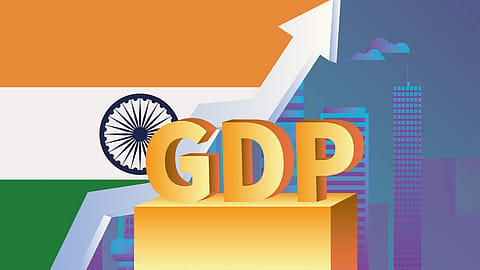India may emerge as the 2nd-largest economy in price parity terms by 2038: EY report
India is uniquely placed compared to the US, China, Germany, and Japan, says EY Economy Watch.

India may become the world’s second-largest economy in purchasing power parity (PPP) terms by 2038, with a projected GDP of $34.2 trillion, according to the August 2025 issue of EY Economy Watch.
Compared to the US, China, Germany, and Japan, India is uniquely placed, EY said in a report released on August 27.
While China leads in overall size with a projected $42.2 trillion economy (PPP) by 2030, its ageing population and rising debt are challenges, the report said.
Purchasing power parity (PPPs) is primarily used to convert economies’ national accounts expenditures on GDP and its components into a common currency, equalising the purchasing power of the various currencies used across economies and enabling cross-country comparisons that reflect only differences in the volume of national economic outputs, according to the World Bank.
“The US remains strong but faces high debt levels exceeding 120% of GDP and slower growth rates. Germany and Japan, though advanced, are constrained by high median ages and heavy reliance on global trade. In contrast, India combines youthful demographics, rising domestic demand, and a sustainable fiscal outlook, giving it the most favorable long-term growth trajectory,” it said.
As per the IMF, India’s economy could reach $20.7 trillion (PPP) by 2030.
India is also expected to become the third-largest economy in market exchange rate terms by 2028, overtaking Germany, said EY Economy Watch. “While US tariffs may affect nearly 0.9% of India’s GDP, their impact on GDP growth can be contained to just 0.1 percentage point with appropriate countermeasures like export diversification, stronger domestic demand, and advancing trade partnerships,” the report said.
India is emerging as one of the most dynamic among the world’s five largest economies, with strong economic fundamentals including high savings and investment rates, favorable demographics, and a sustainable fiscal position, the EY report said. Despite global uncertainties such as tariff pressures and slowing trade, India’s resilience stems from its reliance on domestic demand and increasing capabilities in modern technologies, it added.
“Among the largest economies, India stands out with a median age of 28.8 years in 2025, the second-highest savings rate, and a government debt-to-GDP ratio projected to decline from 81.3% in 2024 to 75.8% by 2030 unlike peers where debt levels are rising,” the EY report noted.
“India’s comparative strengths, its young and skilled workforce, robust saving and investment rates, and relatively sustainable debt profile will help sustain high growth even in a volatile global environment. By building resilience and advancing capabilities in critical technologies, India is well-placed to move closer to its Viksit Bharat aspirations by 2047,” DK Srivastava, Chief Policy Advisor of EY India, said.
India’s trajectory is reinforced not just by demographics but also by structural reforms and resilient fundamentals, the EY report stated. “High saving and investment rates are fueling capital formation, while fiscal consolidation is improving sustainability. Reforms such as GST, IBC, financial inclusion through UPI, and production-linked incentives are strengthening competitiveness across industries. At the same time, public investment in infrastructure and adoption of emerging technologies like AI, semiconductors, renewable energy are setting the stage for long-term resilience,” it said.